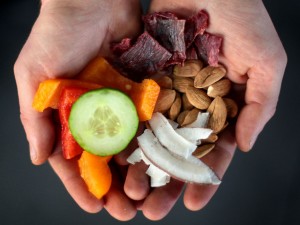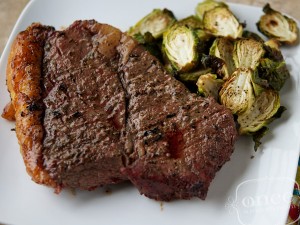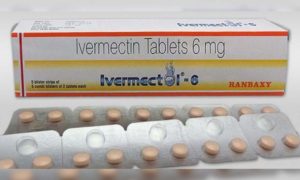
The Evolution Diet ( also known as Zero to Paleo) is revolutionary not because it uses cutting-edge chemistry, but rather because it uses ancient biology. It encourages you to get more in touch with your body and know how it was designed to eat. It also encourages you to eat how and when you were meant to eat, not just what you were meant to eat. When this happens, you will eat the types of food you would without the influences of culture and regain the ideal weight you may have previously lost. This will inevitably lead to a happier, healthier life all around.
One of the unique aspects of The Evolution Diet is that it is a consistent plan for eating throughout one’s life. While most other diets start participants off with a “shock-your-system” introduction followed by eating in moderation, The Evolution Diet calls for one unique, life-long method of eating, which reflects your personal lifestyle and can support you through activity or inactivity.
 The goal is to imitate the diet of natural humans (or, as referred to onward as Natural Man or Nat) in order to fit the diet our bodies have been designed to take in. Regardless of how you think our species was designed, we were made to eat certain things and in a certain way. Natural Man (without present culture) had been around 500 times longer than Cultural Man and his extremely efficient and excessively caloric foods. During that time, our ancestors’ digestive systems were selected to eat based on our surroundings and environment, which varies only slightly outside of the Arctic Circle.
The goal is to imitate the diet of natural humans (or, as referred to onward as Natural Man or Nat) in order to fit the diet our bodies have been designed to take in. Regardless of how you think our species was designed, we were made to eat certain things and in a certain way. Natural Man (without present culture) had been around 500 times longer than Cultural Man and his extremely efficient and excessively caloric foods. During that time, our ancestors’ digestive systems were selected to eat based on our surroundings and environment, which varies only slightly outside of the Arctic Circle.
In essence, Natural Man evolved to eat a specific way: small quantities of low-sugar and high-fiber foods (referred to on this site as LoS Hi-Fi foods) throughout the day until he hunted and subsequently gorged on mass quantities of nutritious, lean meat (High Protein). This simplified version of the subsistence hunter/gatherer diet illustrates a rough outline of the foods our bodies are expecting us to feed it.
If we don’t feed our bodies a diet along those lines, they react adversely with the conditions like weight gain, heart problems, and sleep apnea, and which eventually send some to the doctor’s office.
The Evolution Diet begins with the basic hunter/gatherer and infuses modern healthy foods and exercise to produce the most well-rounded, sophisticated dietetic plan yet. Optimal well being can be obtained by combining the intrinsic wisdom of our genes with the wealth and expertise of today.
Read more in Zero to Paleo!
| The Four Principles of The Evolution Diet 1. Listen to your body, not your culture 2. Appropriate your diet in the method of our ancestors 3. Eat from nature and avoid intake of Artificially Extreme Foods (AEFs)4. Exercise and sleep when your body tells you to. |
The following is an excerpt from Paleo Family: Raising Natural Kids in an Unnatural World:
1. Listen to Your Body
One of the main causes of poor health is that people listen to culture instead of their own bodies. They usually find themselves eating a bag of potato chips out of boredom or because culture has made it ‘normal’, when they should be eating ONLY when they are hungry. Listening to your body instead of society is one of the most important things you can do to get back to the way you were designed to eat. If people followed this principle alone, they would lose a good amount of unwanted weight and/or feel dramatically better.
The extraordinary thing about this principle is that you don’t need any complicated gadgets or expensive dietary supplements to be able to follow it and track when it’s time to eat; you have an automatic meal timer and calorie counter built in your body. Hunger pangs and the trigger of the hunger hormone ghrelin are your cues to start looking for more food. The trick is to decipher between actual physical hunger and other things that compel us to eat like boredom, stress, or habits such as the mechanical reaction to the lunch bell. This seems obvious, but few people in our Outlook-calendar-dictated-lives actually do it. The key is to eat only when your body is telling you, not for psychological or cultural reasons.
The first principle of the Evolution diet gets to the heart of the difference between two common words associated with eating: hunger and appetite. Hunger is the physical sensation of discomfort or weakness that is caused by the lack of food, whereas appetite is simply the desire for food. Hunger is the physiological need for food and appetite is the psychological need for food. The difference is that hunger addresses a real need, whereas appetite addresses an artificial need to eat. To attain the ideal diet, we must eat only when we’re hungry, not when we have an appetite for food.
To do this, we must listen to our bodies—physical hunger pangs are the direct indication that your stomach is emptying as a normal step in digestion and that it’s ready for more food. When your stomach does this, your metabolism begins to slow down, which means you begin to lose energy, store fat, and your endocrine system starts to kick in causing unneeded stress. To avoid slowing your metabolism you must satisfy your hunger with a small amount of natural low-sugar, high-fiber food.
 That means that people who naturally like to eat constantly are in luck. The Evolution diet promotes constant snacking throughout the day on natural foods. You can do this because you will not be eating large 1,500-calorie meals every four hours; you will be eating small quantities of moderately difficult to digest foods. Natural foods like vegetables, nuts, and fruits tend to be much more difficult to digest than typical fast food like doughnuts or French fries. We are designed to pick at food constantly all day—call it grazing or gathering—and we should, as long as the food isn’t the super-artificial foods that you would find at the end of a drive-thru or anything from a box or bag in the grocery store.
That means that people who naturally like to eat constantly are in luck. The Evolution diet promotes constant snacking throughout the day on natural foods. You can do this because you will not be eating large 1,500-calorie meals every four hours; you will be eating small quantities of moderately difficult to digest foods. Natural foods like vegetables, nuts, and fruits tend to be much more difficult to digest than typical fast food like doughnuts or French fries. We are designed to pick at food constantly all day—call it grazing or gathering—and we should, as long as the food isn’t the super-artificial foods that you would find at the end of a drive-thru or anything from a box or bag in the grocery store.
The types of food that are perfect for this grazing are low in sugar and high in fiber, or what we call LoS Hi-Fi foods, and other complex carbohydrates with a moderate amount of fat and protein.
For all of the items above, as well as the rest of the foods we classify as healthy LoS Hi-Fi foods, it is important to note two things: (1) Healthy serving sizes are a lot smaller than the typical serving sizes promoted by modern culture, and (2) Even the healthy serving sizes (those on the label of each food) are too much to be eaten during a crammed lunch break. In Natural Man’s prehistoric lifestyle, he would have trouble downing much more than a bite or two of the above foods, much less gorging himself with them, but in today’s fast-food society, it’s not uncommon for someone to eat three or four times a healthy serving of three or four different kinds of food. Natural Man (Nat) followed the emptying of his stomach, not the ticking of the work clock, by snacking on the above foods all day instead of stuffing himself with them within a certain time period. As a result, Nat had better general health than most of us today.
You will notice when you eat just a couple bites, you almost immediately thereafter lose the physiological sense of hunger. If you listen to your body, it will tell you to leave the rest of the snack for later. Eat the above foods in small, regulated portions so that you don’t get to the point when you feel stuffed, or even full. For instance, say you eat an orange and a small bowl of oatmeal with berries for breakfast and the first time you’re hungry after that is at 10 am. Eat a handful of roasted almonds. In about twenty minutes you may feel a little hungry again—have three bites of seasoned steamed broccoli and continue in this way until you’re no longer getting any hunger pangs. If you spread out what would be a large lunch out over several hours, you will benefit by maintaining a more consistent metabolism, and as a result, a more consistent level of energy and less discomfort from hunger or overfeeding.
While snacking in the manner described above feels like you’re eating more, you’re probably eating less. Researchers at Penn State University have shown that eating an apple about 15 minutes before lunch reduces the amount of food taken in at the meal. The apple-eaters consumed over 180 fewer calories (130 calories when you factor in the apple) than their counterparts who refrained from what I call the appletizer. Brian Wansink, director of Cornell University’s Food and Brand Lab in Ithaca, N.Y. said, “This is great evidence that it’s not the calories, but it’s the effort of eating that tricks us into thinking we’re full.” When we’re in lunch mode, we’re not concerned with eating appropriately, we usually just want to finish off the plate in front of us and do so in the allotted 30 minutes. Snacking, on the other hand, refocuses our attention on our body’s clues and allows us to eat only what our body is asking for.
Parents will notice that their children naturally want to snack all day long. They nibble here and there and once they discover the snack shelves in the pantry always seem to gravitate toward them throughout the day. It’s difficult for some parents and caretakers to overcome the three-square-meal plan that has been ingrained in our brains, but snacking—as long as it’s on natural foods—is much healthier than forcing kids to hold out for a big lunch.
When parents are worried their children aren’t eating enough, it may be because they’re not allowed to eat when their bodies are telling them to. Let them snack throughout the day on LoS Hi-Fi foods and they will most certainly eat more on the whole than if they were restricted to breakfast, lunch, and dinner.
Remember, there is a happy medium between the hunger pangs you feel and the stretched-stomach feeling you have after eating too rapidly. It is important to maintain this happy medium throughout the day if you want to eat how your body is designed to eat. Eating only when you are hungry and not overeating when you do will take some discipline at first, but once you get the hang of it, you will not want to eat any other way.
2. Appropriate Your Diet
One of the worst things about the average modern diet is the failure to appropriate and eat specific foods when they’re needed and only when they’re needed. This aspect also tends to be the most beneficial to one’s health and the aspect that most other nutrition plans and certainly fad diets overlook. We were designed to eat certain foods at certain times because those foods provide our bodies with timely benefits. The Evolution diet breaks down healthy foods into three categories: complex carbohydrate snacks or LoS Hi-Fi foods, high-energy foods, and high-protein foods. LoS Hi-Fi foods, as described above, provide one’s body with sustained energy throughout the day; high-energy foods give one’s body a boost before and during exercise; and high protein foods rebuild one’s body after exercise and prepare you for sleep. Each healthy food category has a specific time to be eaten according to your activity throughout the day, but there are a number of factors in modern culture working against this appropriation. Cultural superfoods (e.g. wheat, rice, and corn), fast food, and, believe it or not, the balanced meal are just a couple of the agents working against a healthy diet—all of these go against what and when your body is designed to consume.
Someone may even be eating all-natural and healthy foods, but if he isn’t eating them at the appropriate times—according to activity—he is not maximizing his diet. For example, drinking several glasses of grape juice before sleep would make one restless at night and tired the next day. Also, eating a large protein meal in the morning may make one sleepy an hour later, only to be combated with three or four cups of coffee.
If you are overweight, nervous, tense, easily stressed, or a horrible sleeper, simply appropriating your diet could do wonders. All of those conditions could be due to your body not getting what it needs with regard to energy and nutrients at the right time. Nat, our friendly caveman, ate specific types of food at specific times and as Omberto, a paleo pioneer likes to put it, “There is food for work, food for play, and food for the rest of the day.” The food for work is the high-protein meal; the food for play is the healthy high-energy foods; and the food for the rest of the day is LoS H-Fi snacks. This is the essence of appropriating your diet.
Good foods must be eaten at the right time to truly be good. For example, an orange is a very nutritious food that provides vitamins that help bolster our immune systems and prevent diseases like scurvy. We can easily employ the energy we get from an orange, and the moderate amount of fiber it contains regulates our digestive tracts. So, an orange should be considered a healthy food. But, if someone ate five oranges in the hour right before attempting to sleep, it would not be healthy because the easily digested sugars in an orange might make the citrus fanatic shoot around like the Tasmanian Devil while the high acidity in the orange may cause an imbalance of pH in the stomach. This wouldn’t make for pleasant sleep. Also possible is an overabundance of vitamin C. All vitamins become toxic at certain levels, and while humans can take in and use a super-high amount of vitamin C (RDA of vitamin C is 60 mg, while the toxicity level is somewhere around 25,000 mg), it is possible to have too much of it. With all this being said, it is easy to see how eating healthy foods does not always contribute to health. Again, one can have too much of a good thing—even in food. Moderation, as well as appropriation, is the key to eating the way we would naturally eat things.
 In the same way that eating too much of a healthy food is bad for you, so is eating certain foods at the wrong time. Both dietary flaws give you something your body doesn’t know what to do with. Conversely, it is beneficial to eat certain foods at the right time—the essence of appropriating one’s diet. You may have heard of good foods to eat before you sleep like a warm glass of milk or cottage cheese. Just as there are good foods to have before sleep, there are good foods that you should eat throughout the day, during exercise, or when you are tired but don’t want to be.
In the same way that eating too much of a healthy food is bad for you, so is eating certain foods at the wrong time. Both dietary flaws give you something your body doesn’t know what to do with. Conversely, it is beneficial to eat certain foods at the right time—the essence of appropriating one’s diet. You may have heard of good foods to eat before you sleep like a warm glass of milk or cottage cheese. Just as there are good foods to have before sleep, there are good foods that you should eat throughout the day, during exercise, or when you are tired but don’t want to be.
Complex carbohydrates are perfect throughout the day because they offer a constant flow of energy—enough to allow the body to perform optimally without spiking blood sugar. Healthy sugars are good before exercise to ensure a sustained, high-energy output. They are also handy when you need a little pick-me-up or when you’re feeling tired, but can’t afford to sleep. When you are not dependent on sugar and not constantly eating sweets (like many of us do), a natural high-sugar food will kick up your energy before you can say, “maltodextrose.”
A high-protein meal is perfect a short while after exercise and before rest and sleep. Since exercise breaks down your tissue (most notably your muscles), your body needs the materials to rebuild that tissue after you are done working out. When you eat protein after exercise the amino acids are used for rebuilding and if there’s enough energy in the system through LoS Hi-Fi consumption detrimental protein metabolism, which turns protein into energy and ammonia, can be avoided. If your body gets too much protein, which is what happens when you eat it at the wrong time, the body breaks it down and stores it as fat or gets rid of it all together, creating additional toxins in the body.
There are a number of reasons why a large high-protein meal (think gorging on the buffalo you just hunted) makes sense in the evening before rest. (1) Protein also makes for a good pre-sleep meal because it usually contains the essential amino acid tryptophan, which brings the energy level down and aids sleep after metabolizing into the sleep hormone melatonin. (2) Protein is digested slower than an equivalent amount of complex carbohydrates, making it ideal to eat before extended periods of rest. (3) A large volume of food makes the consumer more tired immediately following the meal because the thermic effect of food (the amount of energy required to digest food) is higher for a larger meal. Blood rushes to the digestion organs when a large amount of food is present, drawing it from other areas, like the head, making the eater more tired.
Throughout the day, while consuming a consistent amount of LoS Hi-Fi foods, the Evolution dieter’s metabolism is running evenly. We recommend physical exercise in the late afternoon or early evening (after work is perfect), during which the body is physically stressed. Hunger should subside throughout the physical exercise, but when it returns, we recommend a large meal full of healthy high-protein foods like fish, pork, or chicken. With this plan, one can eat to his heart’s content around dinnertime, as long as one is eating high-protein, high-fat foods. Low- or zero-sugar veggies (zucchini, broccoli) are fine for dinner but reduce the effectiveness of the plan. And as a guy with the most wicked sweet tooth known to humanity, it kills me to say it, but anything with sugar should be avoided after dinner as well. That’s right, no pie for dessert.
Putting it in terms of modern fad diets, you should eat Whole30 (but with some grains) throughout the day and the Keto diet after exercise. All of this is documented in Zero to Paleo: appropriation of one’s diet optimizes digestion and overall health by creating a natural change the digestive process that coincides perfectly with your normal sleep cycles.
It’s important to appropriate a child’s diet as well. While the distinction between exercise and rest is blurry as kids seem to be constantly moving, they respond to macronutrients the same way adults do. From birth through adolescence, parents should be appropriating their children’s diets. This is done automatically while the infant is breastfeeding as the contents of breastmilk actually change over a 24-hour period reflecting the appropriation for adults described above. Studies show that breast milk contains more carbohydrates the fuller the breast is in the morning and higher fat proportion later in the day as the milk is more concentrated.
The level of protein in breast milk stays relatively consistent throughout the day, but it contains varying amounts of the sleep hormone melatonin to promote the sleep cycle—elevated at night and reduced during the day. Another component of breastmilk—the non-protein nitrogen fraction nucleotides—also fluctuates over a 24-hour period. In particular, adenosine 5’monophosphate (5’AMP) influences sleep more than any other, inducing a hypnotic effect when consumed. Levels of 5’AMP increase in breast milk from about 4 pm to peak at sunset and drop off dramatically through the night.
It is commonly thought that formula actually helps infants sleep more than breast milk, prompting the disparaging myth of the “lazy mom” who gives up breastfeeding for the bottle. Infants may indeed sleep better and longer when bottle fed, but that has more to do with the volume that bottle feeders take as opposed to the content of the formula. This is why we recommend a combination approach for as long as you can if the breast milk supply is not enough. Little ones need the volume but the natural, ever-changing contents of natural breastmilk is indispensable.
Changes in the composition of breastmilk throughout the day prepares the infant for more activity during the day and a longer sleep cycle at night. This appropriation should be emulated when the child moves on to purees and, later, solids. Snacking on LoS Hi-Fi foods throughout the day and eating a large protein meal in the evening for toddlers up will decrease toddler “hangry” crankiness throughout the day and improve sleep at night. Of course, it won’t surprise you to find this is how children want to eat normally. Many parents we talk to say mealtime is a struggle and that the kids just want to snack all day. Don’t blame the kids! It’s their genes talking. This diet is perfectly natural and in fact the healthiest system if the foods they eat are all healthy.
Let’s review. To eat what and how you would naturally eat involves snacking on foods that are low in sugar and high in fiber with a little protein throughout the day to sustain a high and level amount of energy. It is acceptable to eat natural high-energy foods before, during, and after exercise. Between exercise and sleep, you should fill yourself with a high-protein, high-fat meal and no sugar. Your high-protein meal should be big enough to tide you over through sleep and ready you to start the cycle over in the morning.
3. Eat From Nature
In 1988, Oprah Winfrey pulled out a wagon full of 67 pounds of greasy animal fat to help her talk show audience visualize how much weight she had lost. It was gross to look at but that episode was her most-watched. The image of so much lard reinforced the concept that was prevalent at the time: eating fat is unhealthy.
The United States saw a steady increase in obesity and diabetes from the early ‘70s on and experts pointed to saturated fat as the culprit. But that was too confusing to differentiate the different fats, so they just recommended people eat less fat altogether. By a 1988 report, the fatty-food-causes-heart-disease link was so thoroughly established in medical science that the Surgeon General C. Everett Koop declared, The depth of the science base underlying its findings is even more impressive than that for tobacco and health in 1964.” So, manufacturers rolled out the low- and no-fat snack foods to meet the market demand. People cut out fat from their diets across the board and suddenly obesity and diabetes plummeted, right? Wrong.
When manufacturers took out the fat, they didn’t reduce the calories of their products, they just replaced it with more carbohydrates and, specifically, sugar. Doctor Walter Willett of the Harvard School of Public Health said, “One of the most unfortunate unintended consequences of the fat-free crusade was the idea that if it wasn’t fat, it wouldn’t make you fat. I even had colleagues who were telling the public that you can’t get fat eating carbohydrates.”
 And what do you know? Despite people consuming less and less fat, they became fatter than ever. Obesity and type-2 diabetes rates increased even more. It turns out, after all this time, that fat got a bad rap. Willett continues, “When we began our studies back in the late 1970s, we expected that we would find a relationship between, say, fat intake and breast cancer, because that was almost an accepted relationship. But as the data started coming in over the years, we just did not find any higher risk of breast cancer among women who consume more fat in the diet. And the same was true for colon cancer and for heart attacks and risk of type 2 diabetes. In fact, the percentage of calories from fat in a diet has not been related to any important health outcome.”
And what do you know? Despite people consuming less and less fat, they became fatter than ever. Obesity and type-2 diabetes rates increased even more. It turns out, after all this time, that fat got a bad rap. Willett continues, “When we began our studies back in the late 1970s, we expected that we would find a relationship between, say, fat intake and breast cancer, because that was almost an accepted relationship. But as the data started coming in over the years, we just did not find any higher risk of breast cancer among women who consume more fat in the diet. And the same was true for colon cancer and for heart attacks and risk of type 2 diabetes. In fact, the percentage of calories from fat in a diet has not been related to any important health outcome.”
On the other hand, the ingredients used to replace fat in all those processed foods—specifically sugar—do lead to disease. More recent studies have found a clear connection with added dietary sugar and cardiovascular disease, diabetes, and, perhaps even more important, cancer. Franken-sugars like high-fructose corn syrup (HFCS) are certainly no better. One study found that just two weeks of consuming drinks with HFCS significantly increased heart disease risk factors in the blood. The risk from HFCS is particularly high because fructose is a disaccharide and can only be metabolized in the liver. When people intake a high amount of fructose or HFCS, they have an increased risk of non-alcoholic fatty liver disease.
The most compelling and damning research on sugar has been on its correlation with cancer. Numerous animal studies over the past several decades have shown that cancer cells require greater glucose consumption than healthy cells as a result of their defective mitochondrial processes. So cancer cells can only grow in a glucose-rich environment. Studies have shown that when someone achieves a state of ketosis by consuming a fat-rich, low-carbohydrate diet, cancer growth is halted. When someone’s in a state of ketosis, ketone bodies are used for energy instead of sugar and cancer cells are starved to death. While its appeal is unmistakable, it is becoming clear with every new study that that bitter sweetener may turn out to be the leading cause of death in Western countries.
But how did the manufacturers, the culture, and especially dietetic experts get it so wrong for over 50 years? Was it just another case of man taking technology—in this case with food—too far? Or was it something more diabolical?
It appears that a small but very powerful sugar lobby was to blame. Private industry documents show that a trade group called the Sugar Research Foundation, known today as the Sugar Association, paid three Harvard scientists to publish a review of sugar, fat, and heart disease in the New England Journal of Medicine in 1967. The review minimized the link between sugar and heart health and focused on saturated fat as the primary cause. And the campaign didn’t stop there. Coca-Cola has spent millions of dollars funding researchers seeking to downplay the link between sugar and obesity. Subsequently, candy makers also funded studies that showed that children who eat candy weigh less than those who don’t.
It seems surreal that so many people could be fooled by an idea so counter to common sense, but as with all of the cases described in this book, the medical establishment took something unnatural and made it the norm. The result is millions of lives harmed or prematurely ended. This is why, especially with diet, we recommend the natural alternative.
One of the main principles in the Evolution diet is to eat from nature and that means avoiding what is known as Artificially Extreme Foods (AEFs), which are exceptionally dense in calories or any other ingredient like sugar. Although sugar can be found naturally in many foods, it is an Artificially Extreme Food because it is completely unnatural when it is used as added sweetener in processed foods or especially in soft drinks.
Some AEFs have natural origins but are so concentrated or distorted by the time they make it to your plate or cup that they are extremely harmful to our bodies. Oranges are found in nature, but to get an 8-ounce glass of orange juice, one must squeeze eight to 10 oranges. If someone ate that many oranges, he or she would doubtless be quite full with all the fibrous healthy bits in the rest of the orange. Orange juice is an AEF because it is a source of such highly concentrated sugar that it is not natural even though its derivative is natural. The same goes for fried foods. Although saturated fat is found naturally in animals, the concentrated amount that is used to deep fry foods is impossible to find in nature. This leads to a critical point about Artificially Extreme Foods: some, like orange juice, can be used as a healthy high-energy food, but others, such as French fries, should be avoided altogether. A good rule of thumb, however, is that the further away from nature a food gets, the worse it is for our bodies.
The Evolution diet promotes smart ways of taking what you normally eat and rearranging it to optimize your body’s mechanical processes, but there are certain foods that you must give up altogether to attain better health. Although there are some instances when you would need to replenish your blood sugar with a little honey, this only occurs during extreme physical output (high-level exercising for more than an hour). The Akie from the Introduction were renowned for their wild honey harvesting skills but they collected the honey after long walks or hunting expeditions. Even then, it is recommended that you drink something with other benefits than just energy. Orange and grape juices are high-energy drinks but have other benefits like vitamin C (100 percent of your recommended daily allowance in a small 8 ounce glass). Different drinks can be deceiving also: a can of Coke has nearly twice as many grams of sugar as the same amount of Gatorade, a beverage that promotes its energy-boosting effects.
You may be asking, “Well, if I can’t eat anything as sweet as a fried Twinkie or as filling as a pound of chili fries smothered with that phony radioactive yellow cheese, doesn’t that take all the fun away from eating?” The answer is NO. When you begin to eat foods the way we were designed, you’ll begin to appreciate more subtle flavors in food. With this plan, you will re-sensitize your taste buds and enjoy a wider range of foods.
I was reminded of the desensitization factor recently on a mountain in Arizona. One day we were heading out to snowboard and ski, and before we hit the slopes, we wanted to get a good amount of energy into us so that we wouldn’t get tired throughout the day. I had a bowl of instant oatmeal with a plenty of sugars, a banana, and a couple of glasses of orange/cranberry juice. I then had a bagel that tasted pretty bland, so I put butter and jam on it. I took an additional bagel with me to eat later that day. After a couple runs down the mountain, including about 15 monumental wipeouts, I began to get hungry. I pulled out the bagel and ate a couple bites. To my surprise, the same bagel that had tasted bland a few hours before, tasted extremely sweet on the mountain. Compared to all the sweet foods at breakfast, I hadn’t noticed any flavor in the bagel, but a few hours later it tasted almost like candy. The intense sugars we ate in the morning distracted us from tasting the actual flavor in the bagel.
An argument can be made that some Artificially Extreme Foods are appropriate in certain situations, like extreme exercise, except when you’re trying to lose excess fat. However, it’s important to use common sense; a fried Twinkie, for instance, is not one of those appropriate AEFs, and if you are trying to lose weight, extreme exercise is an opportunity to tap into that excess weight for energy—eating an AEF after extreme exercise will negate some of the positive effects of the workout.
Sugar is probably the worst AEF in our modern diet. We need very little sugar in order to function property, yet with the low-fat craze of the 1980s, sugar was celebrated as a fine substitute for natural fat. Yet, despite less fat in our diets, waistlines continued to expand and rates of heart disease continued to climb. When we have sufficient energy in our bodies, excess sugar is converted to stored fat and directly contributes to heart disease. Being able to store fat is a great way for us to live through times without food, but the storage of fat is a very stressful process and it harms us when we take it to the extreme. It is an unfortunate statistic that obese people live an average of 7.1 years less than those with an ideal weight, while just overweight people live slightly longer than obese people. In a shocking report by the University of Illinois at Chicago in 2005, it was reported that life expectancy for Americans actually decreased for the first time. The main reason for this is the increase in obesity, which afflicts one third of the US population (an additional one third are considered overweight).
Studies have shown that the average American diet increased calorie intake by 10 percent from the mid 1970s to the mid 1980s. They didn’t see an increase in serving size (however shocking that may seem); they saw an increase in the caloric density of foods. When you add that higher caloric density in foods with the enormous sized portions we eat today, it’s no wonder that the majority of Americans are overweight.
The bright side of this is that it’s never too late for you to correct this problem. You can start with the next bite you eat. The way to do this is eat the way we were designed to eat, not the way the television or our schedules tell us to eat.
Humans naturally want a bit of food in their stomachs at all times. In addition, as we’ve noted, they can handle large quantities (of protein) when needed. But when you replace the low calorie, high fiber foods found in nature with high density, jam-packed foods like a power bar, there is a problem: you will be hungry in a shorter while than if you had eaten a couple stalks of broccoli, but you will have taken in 10 times the amount of calories. This fact is so simple and obvious, yet is still obscure from the common cognizance.
There are certain dieting techniques out there that focus solely on this aspect. The Pritikin Principle is to eat foods that have lower calorie-per-pound ratios. It is not too hard to see how the further a food is from its natural origins, the more calorically dense and extreme it is. An interesting comparison that demonstrates this principle is the different ways to prepare a staple food for many Americans today: corn. Natural corn off the stalk is a fairly sweet 490 calories per pound, while tortilla chips at the friendly neighborhood Mexican restaurant are 2,450 calories per pound! The difference can be attributed to the addition of fatty oils, but also to the condensed nature of the corn in the chip.
The importance of avoiding artificially extreme foods for children is even more important. Having a smaller daily intake, the artificial stuff impacts their diet exponentially compared to that of adults. Some children (like our oldest son) can’t handle any added sugar without immediately bouncing off the walls. And there’s really no reason to give your child any added sugar if you limit it from the start. Weaning a child off sugar may be difficult, but if you give your children natural foods from day one, they will appreciate the sweetness of tomatoes and won’t require candy throughout the day. When you start with solids, it’s important to ease them into flavor with low-sugar foods like whole grain- or brown-rice cereal, avocado, and spinach before introducing the peas, carrots, sweet potatoes, and the toddler staple: bananas. All of those foods are healthy, but if you start them off with a sweet fruit, they won’t appreciate the deliciousness of an avocado.
Avoid common kid AEFs like fruit juices, breakfast cereals, snack bars, and potato chips. The more they eat of these, the more they will require them to eat anything. On the other hand, feel free to introduce spice whenever you think the child is ready. My oldest son wasn’t too happy when he accidentally got some hot sauce on his banana when he was a year old but shortly after he gained an appreciation for spicy foods and can’t live without a chunk of pepper jack cheese every once in a while.
Hunger is an urge telling us to fill up our stomach, and it can be sufficed by something as simple as water. Water is easily digested, however, and a glass of water won’t hold back your hunger very long. H2O, though, is a great supplement to snacks; a couple tasty roasted almonds and a glass of water will make you just as satisfied as if you were to eat a Snickers bar—contrary to the way its advertisers may want to portray the candy, Snickers has easily digested sugars and does not satisfy. Water is also an important supplement when you’re eating dried foods like the fruit in a bag of trail mix. Since the fruit is dehydrated it will take you a lot more to fill yourself than if you were eating fresh fruit. Dried foods usually have much higher caloric density than their hydrated counterparts and many dried fruits have added sugar.
One rule of thumb to keep in mind when trying to avoid AEFs is the more processed a food, the less healthy it is for us and the more jam-packed it is with artificially extreme ingredients.
4. Exercise When Your Body Tells You To
Exercise is one of the most important aspects of overall health. Although one can maintain an ideal weight without exercise, perfect overall health is impossible without at least a moderate amount of physical activity. Exercise has been promoted early and often throughout history and it’s no wonder: people who exercise live longer on average than do their couch potato counterparts. Additionally, the life they do lead is dramatically more enjoyable by being less physically straining during everyday activities and being less susceptible to illness.

As I described earlier, it is vital for people to make exercise a regular habit, however, the Evolution diet will help no matter what the participant’s physical activity is. The reason for this is that it naturally adjusts to the participant’s activity level. In other words, without exercise, the plan restricts the participant to snacking on LoS Hi-Fi foods throughout the day. Unappealing as it may seem, without exercise, people should only eat those foods that are low in sugar, high in fiber all day—often, but in small portions. They should never eat a large meal (high-protein or otherwise) because, in nature, that would only happen after exercise (hunting to Nat, the hunter/gatherer). Without exercise, only small quantities of protein should be eaten and it should be eaten in the snacking manner of the LoS Hi-Fi foods.
In addition, sugary foods, tasty as they are, would not be necessary if one did not exercise. Sugars tend to spike blood sugar (as discussed before) and, if not used immediately, just turn to fat. A sugary orange or bit of honey would compel Nat to fidget and become active and since he was not forced to sit behind a desk all day, Nat could react to the sugary food naturally and we see the same reaction in children: a few minutes after eating excess sugar, children become hyperactive and out of control. They’re using the sugar they just consumed.
We modern Westerners, however, are confined to sitting on our bums for 8-12 hour stretches Monday through Friday. It would be easy to utilize the energy spike if you were prepared to exercise, but clicking on a mouse or meeting with the board won’t quite utilize the energy and all of that excess sugar would go straight to the spare tire. In the meantime, the increased blood sugar might make you irritable or tense. So, exercising allows for a more dynamic diet, complete with large protein dinner, and healthy sugars in addition to the LoS Hi-Fi snacks.
We recommend a couple of guidelines for exercising that will help maximize the benefits of your workout.
(1) Exercise when you are slightly hungry or have a small amount of food in your stomach, not when you are full. When your body begins to work its muscles, it automatically switches its focus from the digestive system to the muscles. Blood that would have gone to the stomach to aid in digestion goes instead to the quadriceps or triceps. This switch, involving vasoconstriction and vasodilation of different body tissues, slows the nonessential bodily activities, and during exercise this means the digestive tract. The problem with this is that when people exercise, the stomach does not receive the blood it is used to getting for the process of digestion and cannot function properly, commonly producing the side effect of cramping. The old adage, “One shouldn’t go into the pool or ocean right after eating a big meal,” is valid, however, it only applies when one is exercising in water because cramping increases your risk of drowning. If water has a relaxing effect on you, it may actually be better for you and your digestion to wade in the pool at that time.
Exercising while you’re slightly hungry has other benefits too. If you are used to eating highly sugary foods, then being hungry before exercising may reduce your energy and motivation to exercise. If you are constantly on a sugar high, being hungry may make you hypoglycemic and weak feeling. However, if you maintain a steady intake of LoS Hi-Fi foods before exercise, your body will not be abnormally stressed without immediate sugar and you will have sustained energy for exercise.
(2) In order to lose weight, exercise when you are tired. This may seem odd, but it really works! Your body becomes tired for different reasons, one of which is low blood sugar. When you have low blood sugar and you push your body in the form of exercise, the body pulls the energy from stored sources, like fat.
You can also apply this to long-term exercising as well. After you’ve been physically active for a couple minutes, your body starts what’s called aerobic exercise. This form of physical activity uses oxygen to break down the glucose that’s stored throughout your body in places like the muscles, the liver, fatty acids, and in extreme situations like starvation, glucose can be derived from protein while exercising. This extremely complex process ends with the muscle cells producing energy (through the wonder molecule ATP).
(3) If you get a boost of energy while you are stationary at work or at the home, use it. Get up and walk to the water cooler; walk up and down a couple flights of stairs or walk around the block; clench and unclench your fists to get the blood flowing. If you don’t mind looking a little silly, do some stretches in your office or do leg lifts behind your desk. Your body will reward you with a relaxed, yet not tired feeling afterward. If you use the sugars that you eat immediately when they come in, you will stress your endocrine system less. Also, by doing physical activity when you get a boost of blood sugar, you will not retain all of the excess, unused energy as fat.



